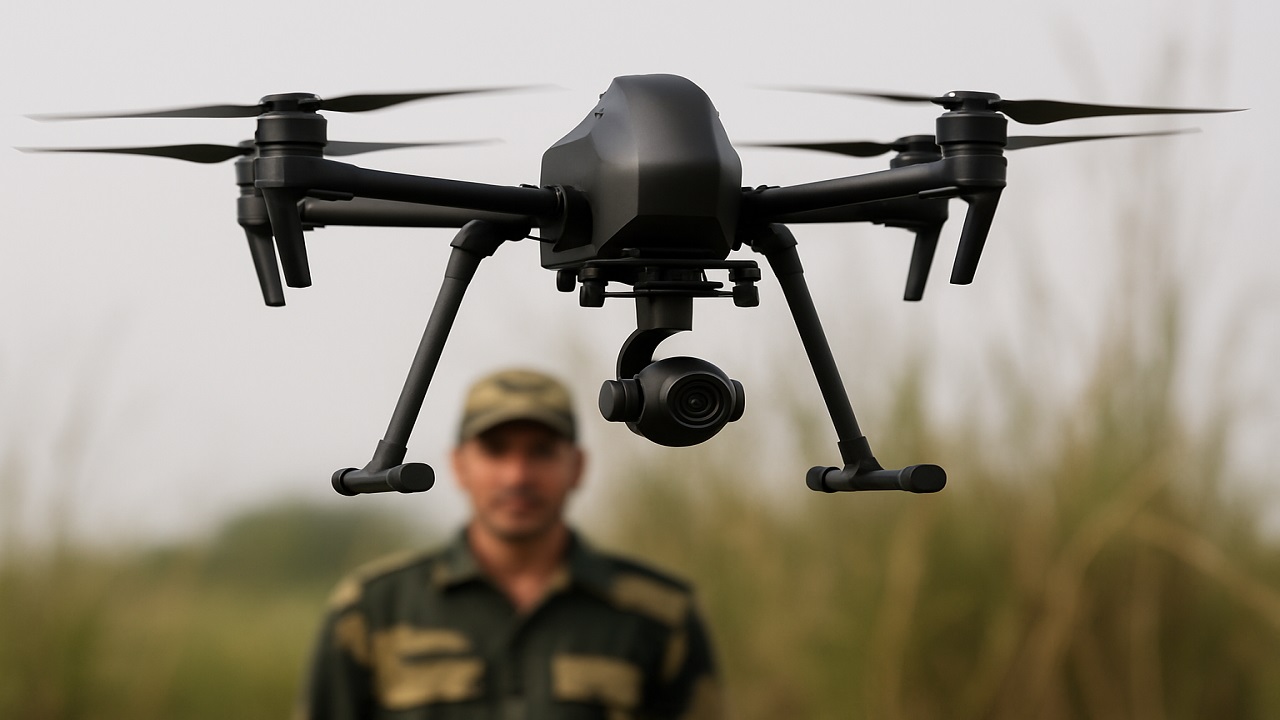Drones, Brigades, and Bhairav: India’s Military Transformation
Context
The nature of warfare is rapidly evolving with technological advancements playing a decisive role in shaping military strategies. In this backdrop, the Indian Army is undergoing a major organisational overhaul aimed at incorporating modern warfare tools, particularly Unmanned Aerial Vehicles (UAVs), into its core operational framework.
Introduction
The Indian Army is set to implement a comprehensive restructuring plan to enhance combat readiness and operational efficiency in future warfare scenarios. A central aspect of this plan involves the standard integration of drones and counter-drone systems across all combat units. This reform is not only a technological shift but also a structural and strategic transformation.
Key Features of the Organisational Overhaul
Integration of UAVs and Counter-UAV Systems
-
UAVs and anti-drone technologies will become standard assets at the battalion level across infantry, artillery, and armoured units
-
Existing practice of assigning drone tasks to general personnel will be replaced with dedicated UAV teams trained for focused operations
-
Each infantry battalion will have drones deployed at platoon and company levels, requiring reassignment of approximately 70 personnel per unit
Emphasis on Indigenous Drone Development
-
Since 2021, India has banned the import of drones and launched the Production Linked Incentive (PLI) Scheme for drones and their components
-
The scheme allocated ₹120 crore over three financial years (2021–22 to 2023–24) to promote indigenous innovation
-
The focus is on developing AI-driven autonomous drones, making drone warfare a key pillar of India’s military doctrine
Dedicated Drone Units and Institutional Procurement
-
Dedicated drone teams will handle drone operations instead of ad hoc assignments
-
Drones will be institutionalised as standard combat equipment
-
Dedicated procurement channels and supply chains will replace emergency acquisitions, ensuring sustained capability development
Formation of Bhairav Light Commando Battalions
-
The Army will raise 30 Bhairav Light Commando Battalions, each with 250 specially trained soldiers
-
These battalions will have mission-specific roles and will be deployed under different commands to enable rapid strike capabilities
-
The first units are expected to be operational within one month
Creation of Integrated Rudra Brigades
-
The Army will restructure existing brigades into Rudra Brigades—combined formations consisting of infantry, armour, artillery, UAVs, and logistics elements
-
These brigades will be capable of independent and autonomous operations
-
They will be suited for both conventional and hybrid warfare, adaptable to diverse terrain
Artillery Modernisation and Divyastra Batteries
-
Each artillery regiment will include two expanded gun batteries and one drone battery equipped with surveillance and combat drones
-
Introduction of Divyastra batteries, integrating:
-
Long-range artillery guns
-
Loitering munitions
-
Anti-drone systems
-
-
These units will be equipped for deep-strike missions and area defence operations
Upgrades in Armoured, Mechanised, and Engineer Units
-
Reconnaissance platoons in armoured and mechanised units will be equipped with surveillance and strike drones
-
Discussions are ongoing to convert one company per battalion into drone-centric units
-
Engineer regiments will include drone sections for mine detection, terrain mapping, and reconnaissance
Enhancement of UAV Infrastructure in Army Aviation and EME Corps
-
Army Aviation Corps will receive additional UAVs, reducing reliance on helicopters for reconnaissance
-
The Electronics and Mechanical Engineers (EME) Corps will expand its drone maintenance infrastructure at the corps zone level, ensuring operational sustainability
Conclusion
The Indian Army’s structural transformation marks a decisive shift towards technology-led warfare, with drones forming the core of modern military operations. By integrating AI-driven systems, institutionalising drone procurement, and creating specialised units, the Army is enhancing its preparedness for future conflicts. These reforms reflect India’s growing emphasis on self-reliance, indigenous innovation, and modern military doctrine.


.jpg)

Comments (0)